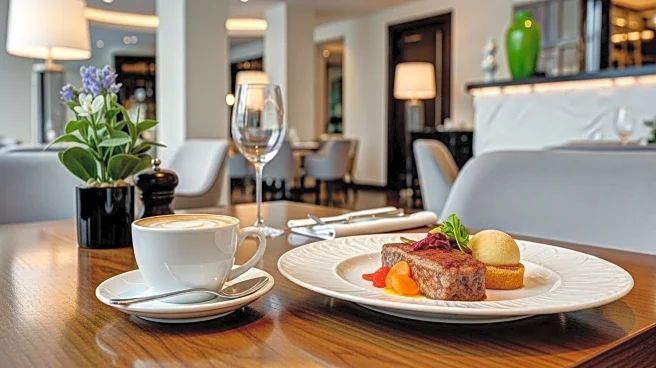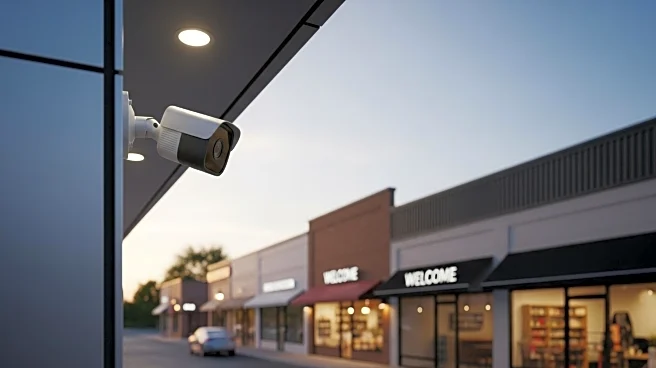What's Happening?
The Hammonds of Hull building, a prominent structure in Hull, is set to reopen in spring 2026 with a national restaurant chain and a coffeehouse. The ground floor has been vacant since the closure of a food hall in 2023. Paul White, director of Garness Jones, the letting agent, has been working for a decade to bring this development to fruition. Renovations are scheduled to begin in January 2026, with the ground floor divided into four self-contained units. A proposal for a bowling alley and bar is also under consideration by Hull City Council. Local residents, including Carol Richardson, express optimism about the revitalization of the area, hoping it will brighten up the city and attract more visitors.
Why It's Important?
The reopening of Hammonds of Hull is significant for the local economy and community. It represents a major step in revitalizing a key area in Hull, potentially boosting tourism and local business activity. The introduction of a national restaurant chain and coffeehouse could attract more visitors, enhancing the city's appeal as a destination. This development is particularly important for Hull, a working-class city, as it may provide new job opportunities and stimulate economic growth. The project reflects broader trends in urban regeneration, where vacant spaces are repurposed to meet contemporary consumer demands.
What's Next?
Renovations are set to begin in January 2026, with the potential for further developments such as a bowling alley and bar, pending approval from Hull City Council. The success of this project could encourage additional investments in the area, fostering a cycle of growth and development. Local businesses and stakeholders will likely monitor the progress closely, assessing its impact on foot traffic and economic activity. The community's response to pricing and offerings will be crucial in determining the long-term success of the new establishments.
Beyond the Headlines
The reopening of Hammonds of Hull could have cultural implications, as it may serve as a hub for social interaction and community engagement. The choice of restaurant and coffeehouse could influence local dining trends and preferences, potentially introducing new culinary experiences to the area. Additionally, the project highlights the importance of strategic urban planning and investment in enhancing city landscapes and infrastructure.










